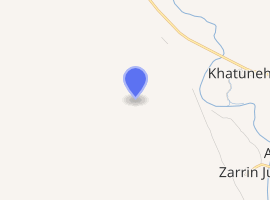Gawri Wall
The Gawri Wall (Kurdish: دیواری گەوری) was a defensive fortification built and in use between the 4th and 6th centuries during the rule of the Sasanians and Parthians. The structure's ruins, which run the length of around 71 miles (114 kilometres), are located in Sarpol-e Zahab County near the Iran–Iraq border.[1][2]
| Gawri Wall | |
|---|---|
دیواری گەوری | |

| |
| General information | |
| Country | Iran |
| Coordinates | 34°26′39.3″N 45°46′52.2″E |
| Military of the Sasanian Empire |
|---|
| Armed forces and units |
| Ranks |
| Defense lines |
|
| Conflicts |
|
2019 archaeological discovery
Though the site was known to the local population living in its vicinity, it was unknown to the archaeological community until its discovery was published in the journal Antiquity in August 2019. Locals have long referred to the fortification as the Gawri Wall.[1][3]
gollark: Suuuuuuuuure.
gollark: `_Whatever` is quite ugly.
gollark: Evidently, C needs better extension mechanisms.
gollark: I'm not sure how you could consider that syntax okay.
gollark: This is why ALL are to utilize zig.
See also
- Great Wall of Gorgan
- Wall of Tammisha
- Khurasan Wall
- Sasanian defense lines
References
- Alibaigi, Sajjad (12 August 2019). "The Gawri Wall: A Possible Partho-Sasanian Structure in the Western Foothills of the Zagros Mountains". cambridge.org. Cambridge University Press. Retrieved 6 November 2019.
- Alibaigi, Sajjad (30 April 2019). "The Gawri Wall: A Possible Partho- Sasanian Structure in the Western Foothills of the Zagros Mountains" (PDF). Antiquity. 93 (e22): 8. doi:10.15184/aqy.2019.97 – via Cambridge University Press.
Survey at Sar Pol-e Zahab has revealed a hitherto unknown long wall in western Iran. Possibly dating to the Partho-Sasanian period, the wall extends more than 100km along the modern border of Iraq and Iran.
- Jarus, Owen (6 November 2019). "Ancient 70-Mile-Long Wall Found in Western Iran. But Who Built It?". livescience.com. Live Science. Retrieved 6 November 2019.
This article is issued from Wikipedia. The text is licensed under Creative Commons - Attribution - Sharealike. Additional terms may apply for the media files.